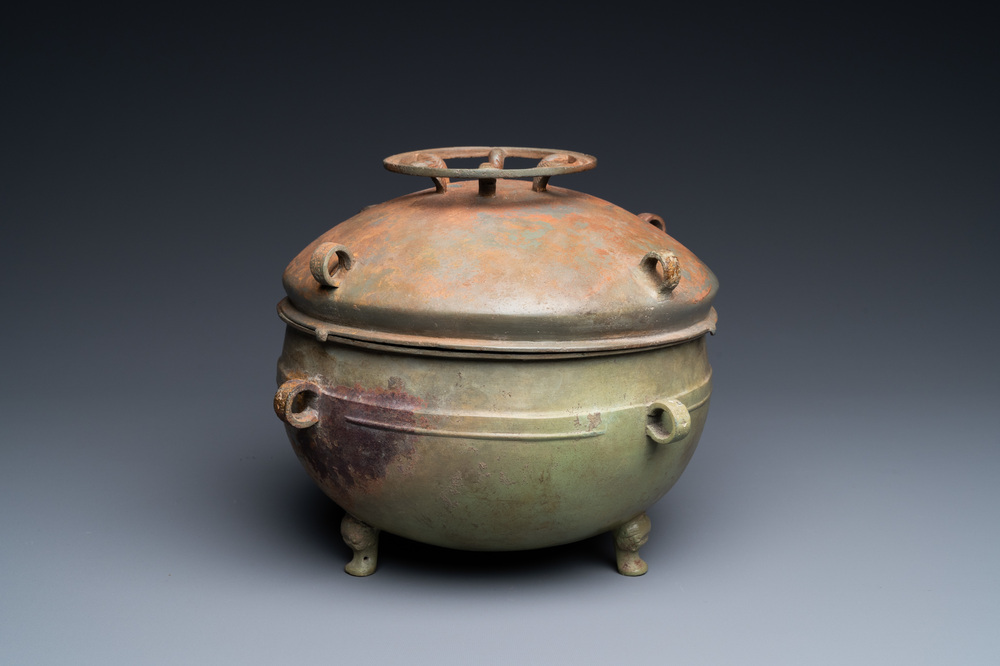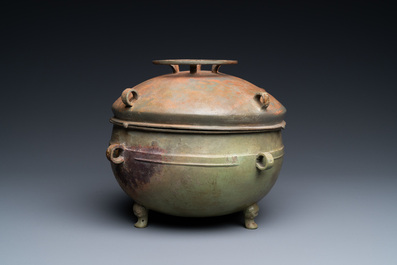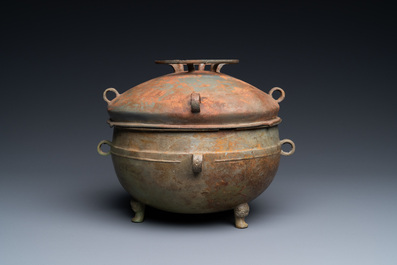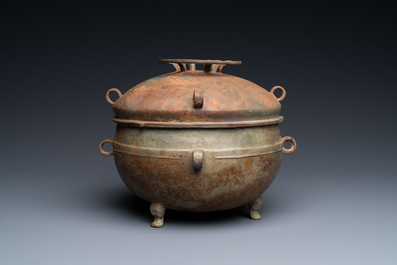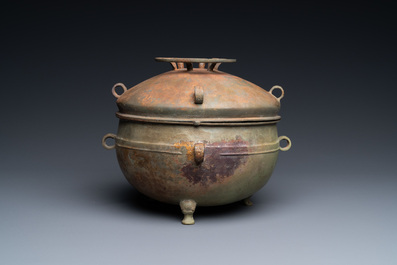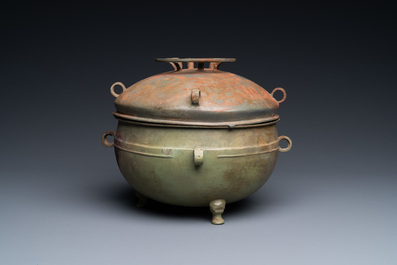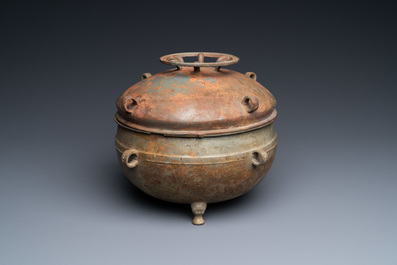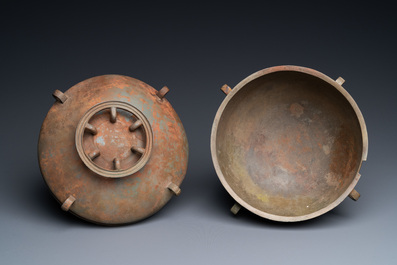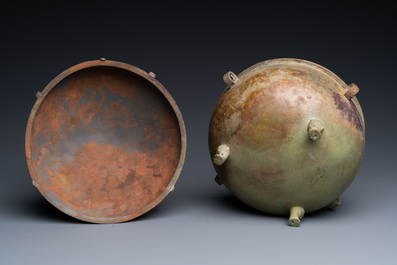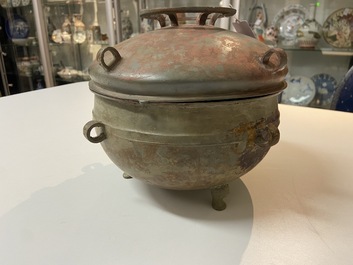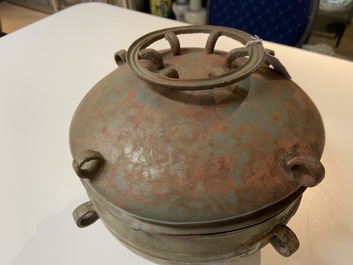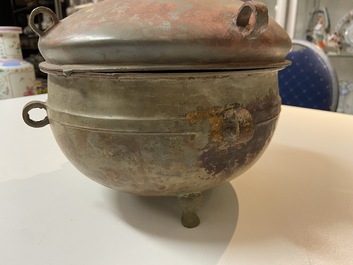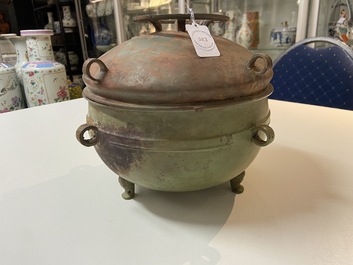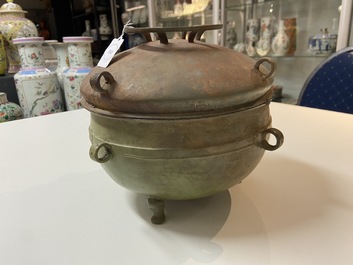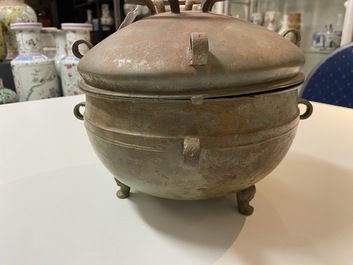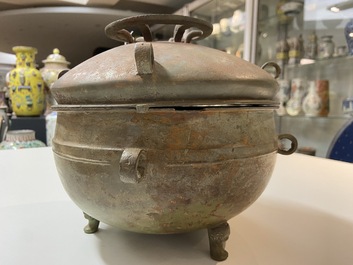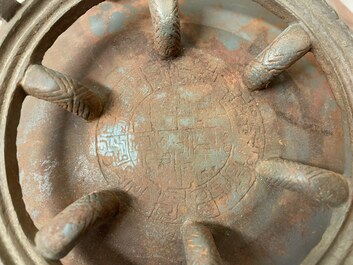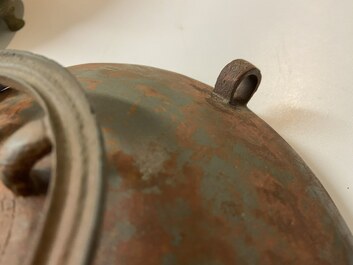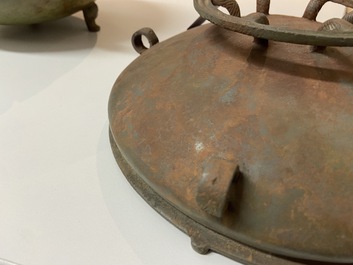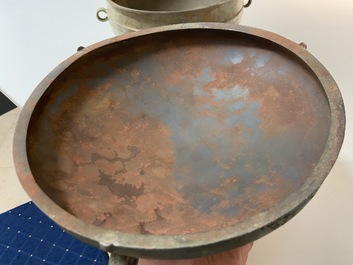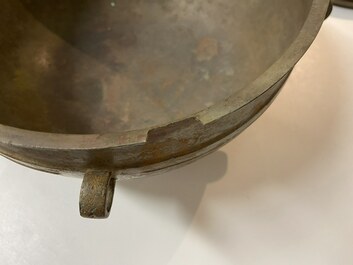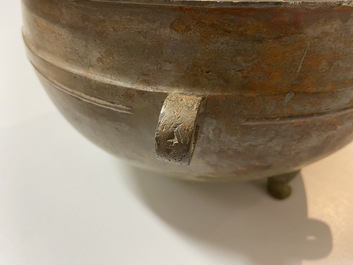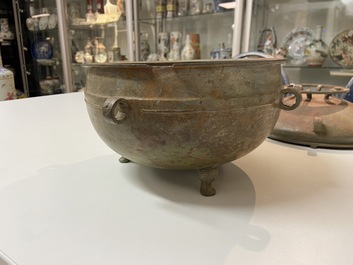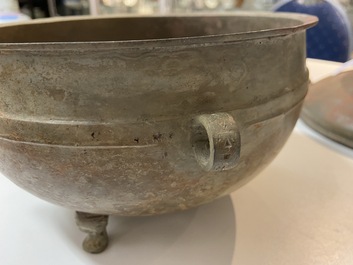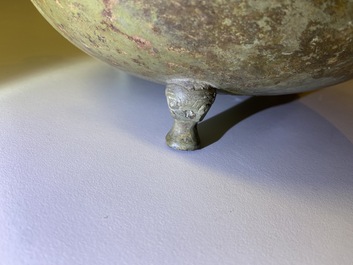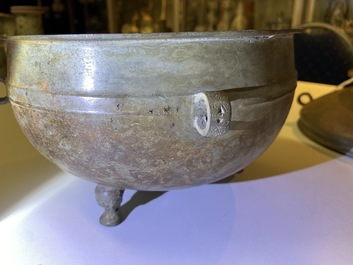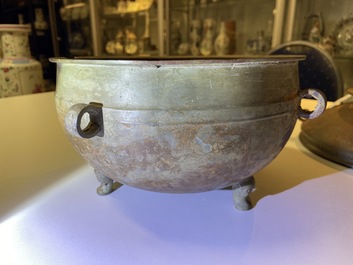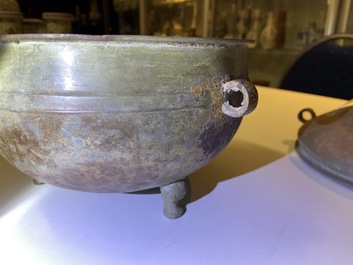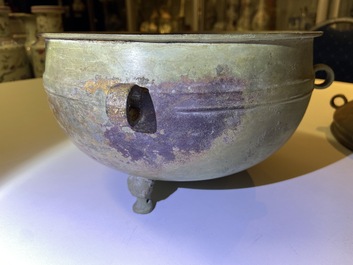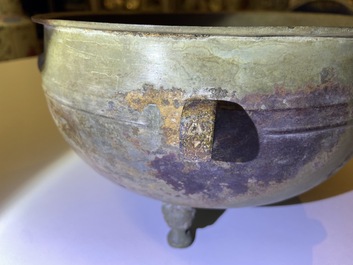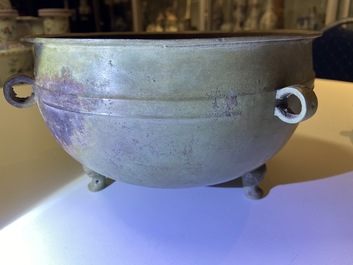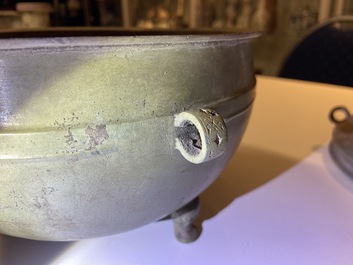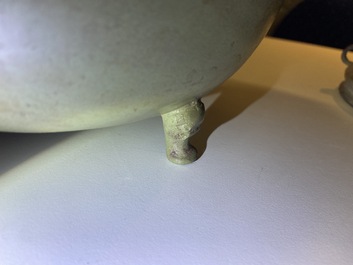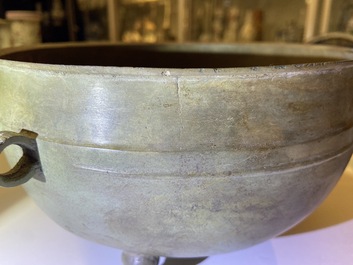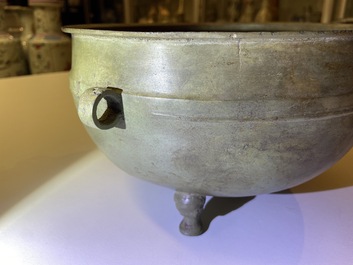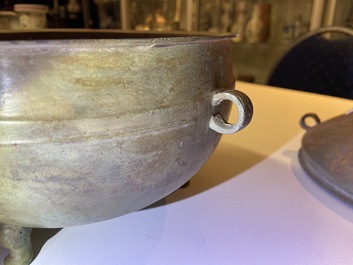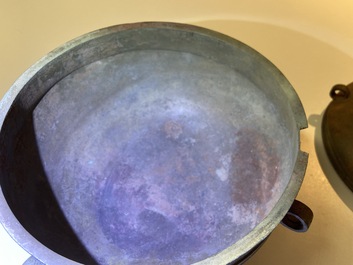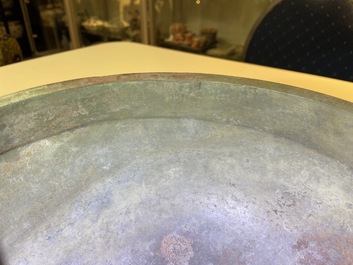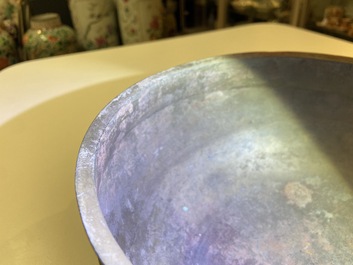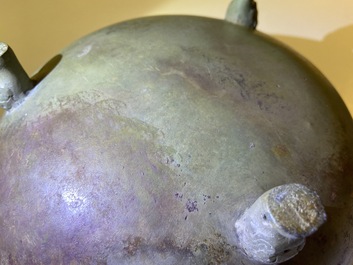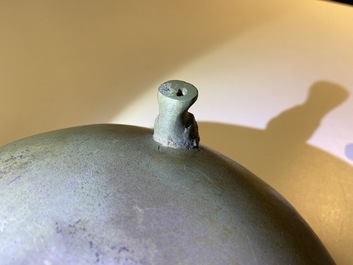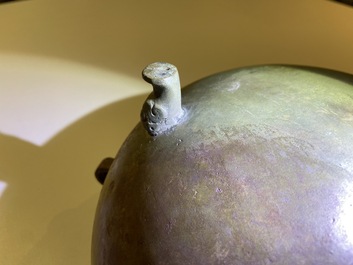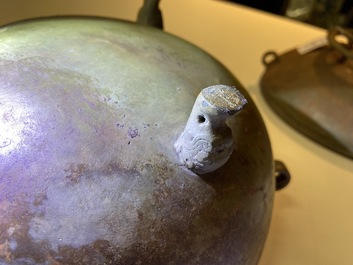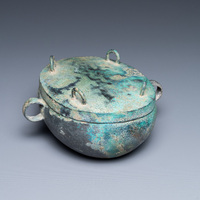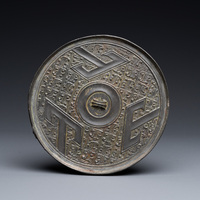We have to double-check your registration and make sure this is not an automated entry in our system. Please complete the test below...
A Chinese bronze ritual tripod 'zhan' food vessel and cover, middle to late Spring and Autumn period
L.: 26 cm - H.: 22 cm
Condition: (UV-checked)
- Lacking a small section on the rim.
- Superficial patination throughout.
- Superficial wear, small bumps, scratches and a few tight short tension cracks visible.
- The lid with an inscription in the upper middle medallion.
- Both bowl and lid slightly deformed.
Provenance: The collection of William Rogers, Australia.
This unusual vessel has been given a variety of names, including gui, ding, gui ding, and dui. Since the recent discovery of such vessels bearing inscriptions in which they are termed 'zhan' (see Li Xuqin 1991, 'Chu Bronzes and Chu Culture.' In New Perspectives on Chu Culture During the Eastern Zhou Period, pp. 11-12, fig. 14, Ed. Thomas Lawton; see also Li Ling 1991, “On the Typology of Chu Bronzes.” Translated and edited by Lothar von Falkenhausen. Beiträge zur Allgemeinen und Vergleichenden Archäologie, Vol. 11 (1991), pp. 57-113). It seems that the shape was developed in central and southern Henan workshops during the seventh century BC, and became especially favored in regions under Chu influence during the late seventh and early sixth centuries BC. Its close connection with Chu or Chu-related sites and vessel assemblages suggests that the zhan held special meaning in Chu culture or ritual practices (see Liu Binhui 1985, 'Chu guo qingtong liqi chubu yanjiu.' In Zhongguo kaogu xuehui di sici nianhui lunwen ji, pp. 108-122. Beijing: Wenwu Chubanshe).
